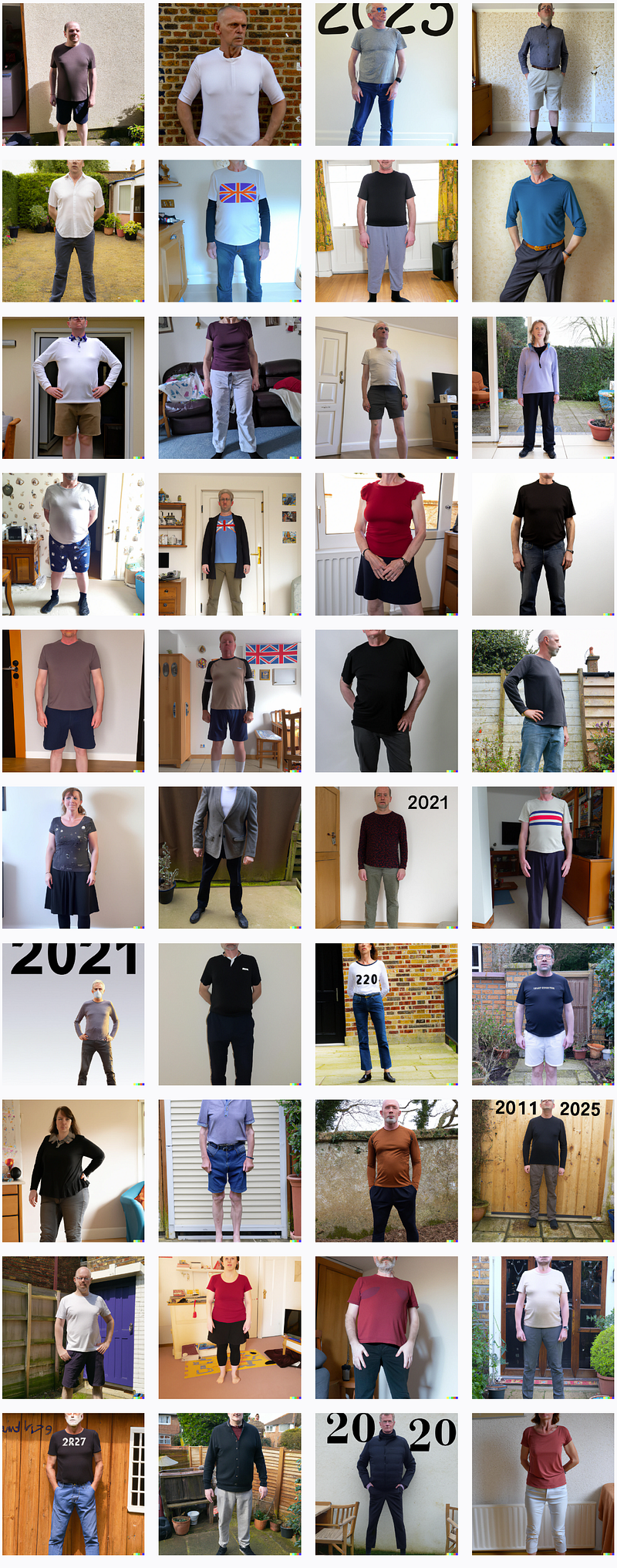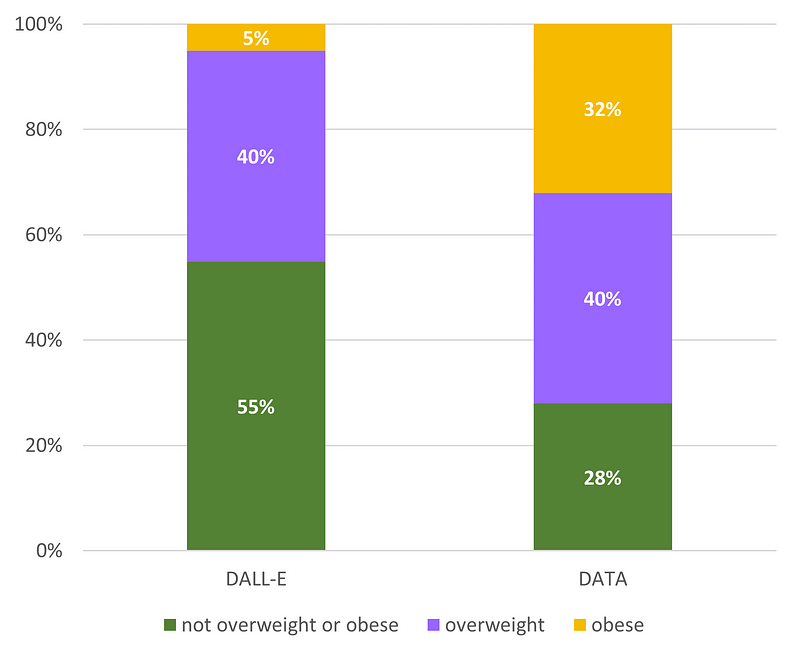Exploring AI's Perspective: Insights on Middle-Aged Individuals
Written on
Chapter 1: Understanding AI's View on Society
The project ‘Our World in AI’ delves into how Artificial Intelligence perceives society. Utilizing OpenAI’s DALL-E, we generate images that represent various aspects of life and then analyze the outcomes. The key question is: does AI merely reflect reality, or does it exacerbate existing biases?
To initiate this process, we provide a specific prompt to describe a societal scene. This precision aids DALL-E in producing consistent results rapidly while allowing us to gather pertinent real-world data. We then evaluate the first 40 images generated by DALL-E, examining them in relation to actual societal conditions. Now, let’s dive in.
Today's prompt: “a 55-year-old English individual in 2023 standing upright.”
Here’s what we obtained:

Fig 1: Output for “a 55-year-old English individual in 2023 standing upright”
The results reveal some surprising aspects. Strikingly, about 42.5% of the middle-aged figures lack most or all of their heads. Furthermore, specifying ‘in 2023’ seemed to prompt DALL-E to place numbers on clothing and backgrounds. However, the settings portrayed do appear convincingly English. Additionally, we note 32 males and eight females, which is far from the expected equal gender representation. For today's exploration, we will focus on body weight.
The generated middle-aged individuals display a range of body sizes: 5% are categorized as obese, 40% as overweight, and 55% fall into neither category. To put this into context, we reference research from the UK Parliament’s House of Commons library, particularly their recent findings on obesity statistics. The comparison is illustrated in Fig 2.

Fig 2: Weight category distribution compared to actual data
The majority of individuals depicted by DALL-E are not classified as overweight or obese, with the proportion in this category being nearly double that of the actual English population. Conversely, it tends to underrepresent obesity, with a ratio of 1 in 20 versus 1 in 3 in real life. The representation of overweight individuals, however, aligns closely with reality. In the concluding section of this analysis, we will determine whether AI’s depiction of society is ahead, behind, or accurately reflects the present.
Our conclusion today: Leading
DALL-E appears to be at the forefront since a significant number of English individuals have been categorized as overweight or obese for the past three decades. It seems that this AI might be trying to envision a healthier future for us. Nonetheless, we are left questioning the prevalence of certain physical traits.
Next week in ‘Our World in AI’: the portrayal of ideal mothers.
Chapter 2: Video Insights on AI and Society
In this chapter, we will explore relevant video content that expands on our understanding of AI's role in society.
The first video titled The Age of AI: Myths, Risks, and Opportunities examines common misconceptions surrounding AI, highlighting both the potential risks and opportunities that it presents in our daily lives.
The second video, Older Adults Prepare for a World Altered by AI, focuses on how the aging population is adapting to the rapidly evolving technological landscape shaped by artificial intelligence.